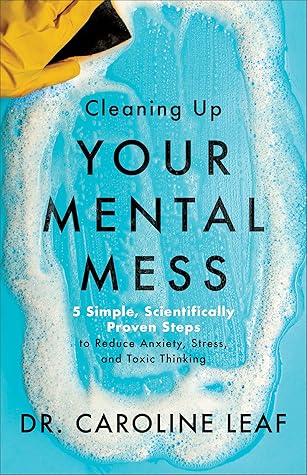More on this book
Community
Kindle Notes & Highlights
Read between
March 23 - March 24, 2022
When I start to feel ___________, I am going to do the belly breathing technique.
Using your reminders daily until you hit day 63 may seem cumbersome at times, but it means you are conquering that toxic habit and building the new, reconceptualized, and healthy way of thinking! During this process, you will be very cognizant of your toxic habit throughout the first twenty-one days as it becomes a long-term memory; thereafter it will become easier and easier to work on.
A Neurocycle Life Hack to Mind-Manage the Habit of People-Pleasing Here’s another example of how to use neurocycling for a common toxic habit: people-pleasing. 1. Gather. Gather awareness about times you’ve noticed yourself people-pleasing and any emotions and physical sensations associated with these memories. What did you think and feel then? What do you think and feel now? 2. Reflect. Now ask yourself questions like: Why did I say yes in that moment when I wanted to say no? What happened when I said yes? How did I feel? Was it helpful or harmful to me? When do I tend to do the most
...more
This highlight has been truncated due to consecutive passage length restrictions.
“I can do things you cannot, you can do things I cannot: together we can do great things.”1
Remember, it’s not about the number of connections you have; it is about the quality of your connections.
Here are some simple and quick ways to improve the quality of your connections and fight loneliness: Join a fitness studio that offers group classes. Volunteer at a church, community center, or local nonprofit. See a therapist or other mental health professional. Invest in current relationships by letting those close to you know how much you appreciate them, take an interest in what they are interested in (even if it sounds boring to you!), write them a letter letting them know how much they mean to you, call them, or when spending time together put away devices and listen. Join a club or
...more
people who help others can experience up to a 68 percent increase in their own healing!
treatment; this is the principle of “get a session, give a session.” Here are a few more community Active Reaches you can do: when you feel burdened with work, are emotionally challenged, or are going through something, try stopping for a moment and helping someone else, even if it’s just to listen, hug, or encourage them. Send an email or text telling them you are thinking of them, or invite someone to lunch or dinner instead of eating alone. When you are in a small space with a stranger, like an elevator, smile and say hello instead of looking at the floor or your phone.
You can do this proactively by getting into a regular mind detox routine. Just seven to fifteen minutes a day of detoxing your mind can improve your sleeping patterns—you are cleaning up your mental mess and getting your mind right before bed, which helps your brain and body regenerate at night.
During exercise, muscles secrete hormones into our bloodstream that scientists are calling “hope chemicals!”10
The many benefits of movement are not limited to physical health. Research has shown that people who are more physically active are happier, have more meaningful lives, have better relationships, experience more positive emotions, deal with depression and anxiety better, and have more hope—all these increase longevity.
Peace of mind is attained not by ignoring problems but by solving them. RAYMOND HULL
When we wake up in the morning, our first priority should be to get our mind into the right mental space for the day, not to catch up on social media or see what is happening on the news. How we spend the first few minutes of the day is incredibly important, because it can set the tone for the rest of the day.
Brain-building is a great way to calm down, especially if you have just had a bad argument or are in a toxic situation. It restabilizes brain energy and chemicals, which often feel like they have been put in a blender when arguments and toxic things happen to us.
eight parts to this daily process: Getting my mind ready for the day (thirty seconds to two minutes). Brain-building (fifteen to sixty minutes—more if I have time, because the more deep thinking I do, the better). Trauma and habit detoxing using the Neurocycle (seven to fifteen minutes). I alternate between a trauma detox and a habit detox every sixty-three days. Thinker moments (five seconds to a couple of minutes every hour, when tired, plus ten minutes early morning or midday, in the sun if possible). Active Reach seven times throughout the day (one to three minutes). I use the reminder
...more
1. Getting My Mind Ready for the Day
start each day self-regulating your thinking. This is what I do: I capture any thoughts I’m thinking about as I wake up by using the 30–90 Second Rule. I set my mind in the direction I want it to go. I focus on my mindset (for more on this, see my book Think, Learn, Succeed) and what I want to focus on during the day. These are some mindsets I have found useful in my own life, in my research, and in my clinical practice: I am determined to self-regulate my thinking, feeling, and choosing all day, which will help boost my intelligence, prevent cognitive decline, and reboot brain energy levels.
...more
This highlight has been truncated due to consecutive passage length restrictions.
2. Brain-Building Using the Neurocycle
3. Trauma and Habit Detoxes using the Neurocycle
4. Thinker Moments
5. Active Reaches
6. Eat Real Food Mindfully
7. Moving and Thermal Exercise
When it comes to exercise, all movement is good movement!
8. My Sleep Routine


